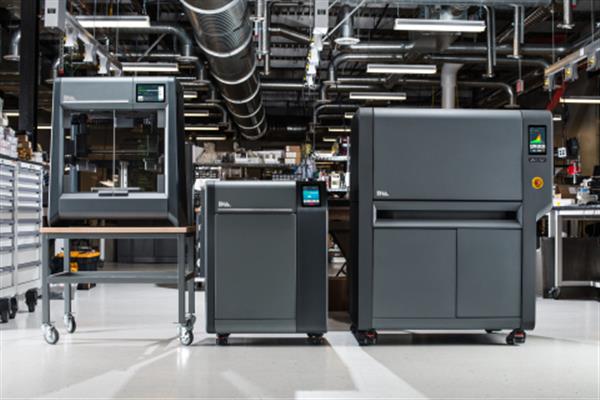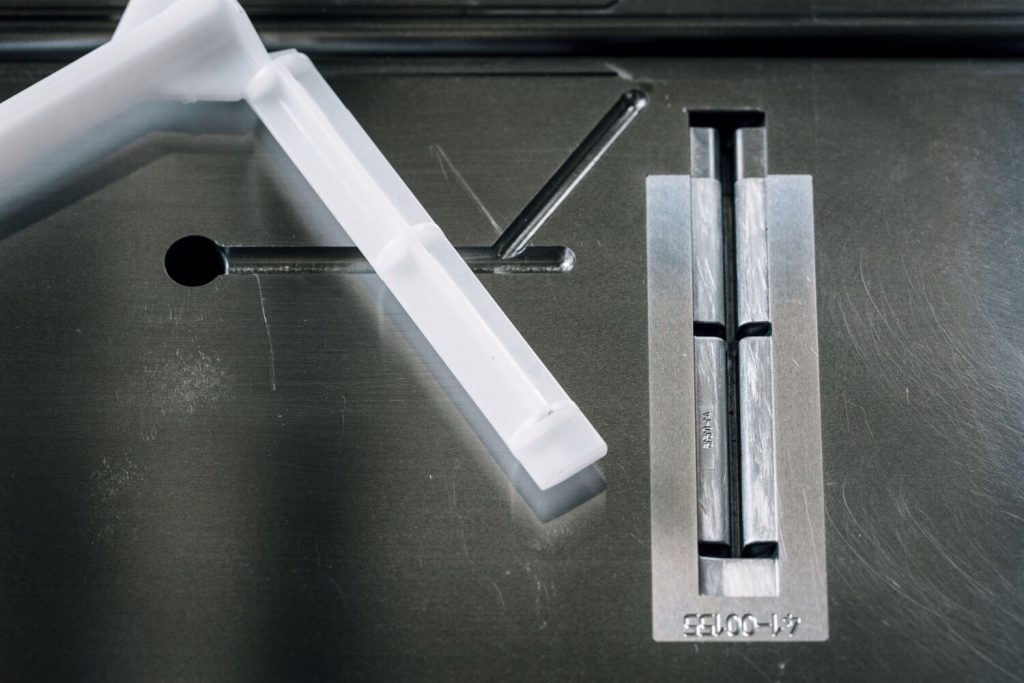Desktop Metal has announced shipping of their metal 3D printer to early “pioneer” customers.
The first metal 3D printing system from Desktop Metal is FFF/FDM based and also includes a debinder and sintering furnace. According to the company it is 10 times less expensive than existing technology today.
The Studio System was first announced in April and uses a filament containing bound metal rods that are 3D printed to create a green part. This can then be sintered in the furnace to create a dense metal component. Early reports from pioneer customers praise the process.

Metal 3D Printing at Google
The first customer to receive one of the Studio System metal 3D printers was Google’s Advanced Technology and Products (ATAP) group. While Desktop Metal cannot reveal precisely how ATAP are using the machine, past projects at ATAP have tended to focus on mobile hardware. One such endeavour was the now defunct Project Ara – aimed at making a modular phone.
“This marks the first time our team will be able to use metal 3D printing for rapid prototyping of our hardware parts,” said David Beardsley, manager of Google’s ATAP. “For prototyping, we have previously relied upon casting or using plastic 3D printing. Now with the Studio System, our team will experience shorter lead times, faster product development cycles and the benefits of functional prototypes in an array of metals on demand and in the lab. We look forward to exploring and developing potential applications for many of our projects.”
“Since the launch of our Pioneers Program, we have seen really passionate engineers and world-class companies begin to develop benchmark metal 3D printed parts with the Studio System,” said Ric Fulop, CEO and co-founder of Desktop Metal. “We are extremely excited to begin shipping our Studio printer to these early pioneer customers and sales partners, including Google’s ATAP, and, over the next several months, will be working closely with each to learn more about how engineers want to use our system.”
How Lumenium is saving 85% of cost with 3D printing
Lumenium is another of the pioneer customers. The company is a Virginia-based advanced engine technology company. They are also the inventor and developer of a highly innovative family of internal combustion engines (IDAR Engines).
The Lumenium Inverse Displacement Asymmetrical Rotational Engine (IDAR Engine) is a novel design for producing robust, efficient, internal combustion. Its unique engine geometry provides unparalleled power density for dramatic efficiency gains and work output from a smaller, lighter engine. Qualities include lower fuel consumption and meaningfully lower emissions through more complete combustion at lower temperatures.

Working with Desktop Metal, an optimized design with self-supporting angles to reduce 3D printing time and material consumption was created. This redesigned part improved the ratio of part volume to material volume with uniform geometry and no overhanging features, meaning that the support structures are extremely light in comparison to the weight of the part. Desktop Metal explains,
“On the top and bottom of the saddle carrier, Lumenium typically machines the channels that mate onto the swing arms (also a Studio fabricated part). The Studio System delivers the ability to adjust density in certain sections of the part. We were able to increase the density of only the sections that would be machined and use closed-cell infill on the rest of the part to reduce print, debind, and sinter time, as well as the amount of material used, resulting in lower part cost.”
Working with Desktop Metal and the Studio System created a refined process that is 57% faster (3 days vs. one week) than Lumenium’s previous process of machining components from a billet of material. The saving per part came in at 85% cheaper ($148 vs $980).
Other early customers include the US Navy’s Naval Surface Warfare Center Dahlgren Division, The Technology House, Medtronic and Built-Rite Tool & Die.

Built-Rite Tool & Die metal 3D printing for injection molding
Built-Rite Tool & Die is a mold-making and design firm based in Lancaster, MA. The company makes precision molds for use in a range of injection molding techniques.
The Desktop Metal Studio System has been tested by Built-Rite for the manufacture of several components of the Studio System metal 3D printer. These included a “flipper arm” used in the Studio System to “eject the bound metal or interface media rods into the extruder where they are heated and deposited onto the build plate, shaping a green part.”
Ron Caron, General Manager at Built-Rite, commented that, “Molds must be built to withstand very high pressures. The printed inserts that we prototyped for Desktop Metal were able to pass the first round of tests and successfully molded several parts. At the beginning, we immediately saw some of the advantages of using metal printed components in our molds.”
According to Caron using 3D printing allows the inserts to be produced in a quicker time, given that production could be brought in-house. Also it was possible to design cooling channels in a new way. One benefit here was a weight saving, and subsequent reduction in operator fatigue.

The total cost of the Desktop Metal Studio System is $120,000. The full package includes the DM Studio Printer (additional Printers can be added for $49,900 + tax), a DM Studio Debinder (additional Debinders $9,900 + tax) and the DM Studio Furnace (add additional Furnaces for $59,900 + tax).
This confirmation of shipping ends a great year for the company. In May, 3D Printing Industry readers voted for Desktop Metal as start-up of the year. An accolade that was only surpassed in July when the Burlington based enterprise achieved unicorn status with a successful series D finance round.
As work continues on the company’s second 3D printing solution, the Desktop Metal Production System, having reached this important milestone is a great way to end the year.
Nominate the best metal 3D printers in the the second annual 3D Printing Industry Awards now.
To be the first with all the latest 3D printer releases, subscribe to the free 3D Printing Industry newsletter, follow us on Twitter, and like us on Facebook.



